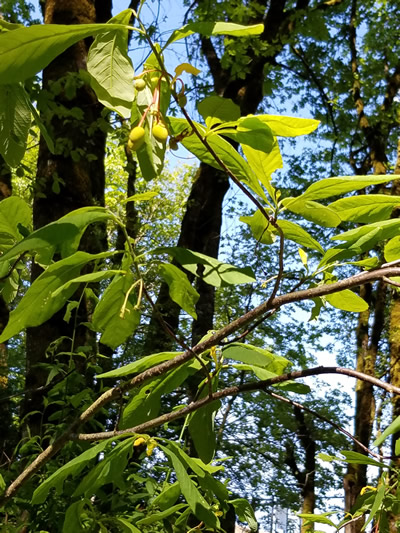 Indian Plum, Oemleria cerasiformis
Indian Plum, Oemleria cerasiformis
Rosaceae – Rose family
The newer generic name Oemleria derives from August Oemler, a European botanist. The white flower clusters are fragrant (“osme” Greek for “fragrance”), and are similar to those of the genus Aronia of the same family, thereby accounting for the earlier generic name Osmaronia. The bright orange to peach colored fruit resembles a cherry (“cerasiformis”) in having a fleshy outer pulp and a stony seed (drupe).
Indian plum is one of the first shrubs to break the bonds of winter dormancy. The bright green of unfolding foliage and clusters of fragrant white blossoms herald the coming of spring in February or March. Flowers are about a centimeter across, and female flowers develop into cherry-like drupes. The fruits display a range of colors- green, yellow, orange-red, and blue-black- as they reach maturity in summer. Birds are so fond of the fruit that the dark blue coloration is uncommonly observed in the wild. Indian plum is a graceful 5 to 15-foot shrub or small tree with multiple arching stems in semi-shaded woods. The two- to four-inch long oblong leaves turn yellow in autumn. As the common name implies the fresh or dried fruits were consumed by many Native groups (5-45).

Information courtesy of “The View From Springbrook Park; an Illustrated Natural History” by Ed Chinn.
Photos taken by Laura Tanz
Sponsored by Friends of Springbrook Park; Lake Oswego, OR